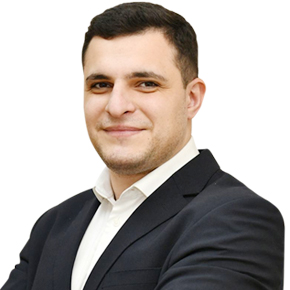Since the war in Ukraine broke out in February 2022, relations between Russia and the West, including the European Union (EU) bloc, have moved from competition to open confrontation, with both sides perceiving the territory of former Soviet states to be an important locus for this confrontation. Russia considers the South Caucasus part of its security architecture. Armenia, in particular, is perceived to be highly sensitive for two reasons. First, Armenia is the only treaty ally of Russia in the region. Second, it is the only state with a Russian military presence on its territory that has not been challenged by the international community. In this respect, the recent establishment of a two-year civilian mission by the EU in the territory of Armenia (the European Union Mission in Armenia or EUMA) has been perceived by Russia as an act directed against Russian interests. Indeed the physical presence of representatives of Western security institutions in the very territory of Armenia, a member state of two Russia-led organizations – the Collective Security Treaty Organization (CSTO) and the Eurasian Economic Union (EEU) – indicates the extension of the West’s traditional sphere of influence, which cannot leave Russia indifferent.
Russia can approach the EU civilian mission to Armenia in three ways that is likely to affect Armenian–Russian relations in the near future.
The first approach is “alarmist,” bearing in mind the two above-mentioned points. We can observe three considerations with such an approach. First, the EU mission can partly crowd out the Russian military presence on the ground. The CSTO discussed sending a mission to the Armenian–Azerbaijani border. Armenia had the option to choose between the CSTO mission and the EU one. Yerevan opted for the second. Thus, responsibility for the security of Armenia, traditionally claimed by Russia, has been partially transferred to the West (the EU in this case) for the first time. Significantly, EUMA covers multiple border areas of Armenia (the main border with Azerbaijan in the eastern part and the border with Nakhijevan in the south-western part). The previous mission, called the European Union Monitoring Capacity to Armenia (EUMCAP), covered a smaller territory, specifically the eastern border areas of Armenia and Azerbaijan. Although EUMA covers more than one border area in practice, the statement from the Council of the EU remained vague declaring that it covers “the border areas of Armenia.” Russia is concerned that this mission will be further expanded to operate on the Armenia–Iran and Armenia–Turkey borders, as well – where the Russians have a military presence. As such, the Russians are worried that in the future their forces deployed on those borders might be replaced by the EU mission. This perspective has been reinforced by the increasing rhetoric of Armenian officials to the effect that the Russian military presence in Armenia is perceived as a threat to Armenia’s security.
Second, the EU mission might reinforce the Brussels format of peace negotiations between Armenia and Azerbaijan, thereby replacing the Russia-led peace process. Per the statement, the objective of the EU mission is “ensuring an environment conducive to the normalisation efforts between Armenia and Azerbaijan.” That the presence of the European mission is called upon, among other things, to revive and, in the future, strengthen the position of Brussels as the main facilitator in Armenian–Azerbaijani negotiations raises questions for Russia as the traditional “peace broker” in the region.
The combination of diplomatic efforts and presence on the ground will enable the EU to oversee the demarcation process between Armenia and Azerbaijan, a role traditionally assumed by Russia as the only third-party negotiator in the region. The Russians are worried that the borders of Armenia – and, as such, the borders of the entire CSTO – will be outlined by the EU.
And third, the EU’s involvement in the South Caucasus has provoked a negative reaction from Iran and led to an intensification of Iranian activities in the region (such as increased meetings between Iranian and Armenian diplomats). The involvement of a large number of powers (Turkey, the EU, and Iran) will gradually lead to a weakening of Russia’s position. No matter how relations between Moscow and Tehran are developing, the South Caucasus has historically been a region of competition between the two sides (and Turkey).
The second, “moderate,” approach is based on two considerations. First, EUMA does not have the capacity or resources to replace the Russian military presence in Armenia and its dominant role in the security architecture of the region. The EU’s inability to force Azerbaijan to unblock the Lachin corridor or deter Baku’s aggression is proof of this. During the deployment of EUMCAP, Azerbaijan fired on Armenian positions at least 20 times in November 2022, according to official statements from the Armenian Ministry of Defence. However, there has not been any targeted condemnation from Brussels. In other words, the presence of the first EU civilian mission in Armenia did not provide further security in practice. Should EUMA fail to contain Azerbaijan’s acts of aggression—physical or verbal—against Armenia, it might discredit the EU as both a security guarantor and a broker in the peace process. A “strategic pivot” of Armenia’s security towards the West would become untenable.
The third and last approach, an “opportunist” one, is based on extracting the maximum possible benefits from the EU’s presence. EUMA has negative medium-term and long-term consequences for Russia as its influence wanes, but in the short term there is a notable positive benefit for Russian interests. As Russia’s main resources remain concentrated on Ukraine, it has become more difficult to maintain stability in the South Caucasus. Reignited clashes would open up yet another front on which Russia would need to engage. EUMA’s presence can help contribute to ensuring stability. If the mere presence of EUMA, however small or civilian that might be, prevents a large-scale escalation, that would be a positive consequence for Russia.
These three approaches are not mutually exclusive. They can be complementary and balance one another. As expected, Russia has adopted the first, “alarmist,” line as its main approach—see Moscow’s statements before and after the second European mission was approved. There has not been any indication of a shift in position yet. This is partly due to two factors. First, the absence of preliminary diplomatic preparations: the Armenian side has not informed its treaty ally, Russia, about the character of the mission, its goals and objectives, emphasizing that it is not directed against Russia. Second, Armenia’s welcoming of the EU efforts was accompanied by a criticism of the Russian military presence in Armenia and in the region.
Depending on how events unfold, we could expect Russia to adopt one or more of these three approaches in the near future.
Sergei Melkonian, Ph.D., Research Fellow, APRI Armenia.
These views are his own.

















Comments
Dear visitors, You can place your opinion on the material using your Facebook account. Please, be polite and follow our simple rules: you are not allowed to make off - topic comments, place advertisements, use abusive and filthy language. The editorial staff reserves the right to moderate and delete comments in case of breach of the rules.